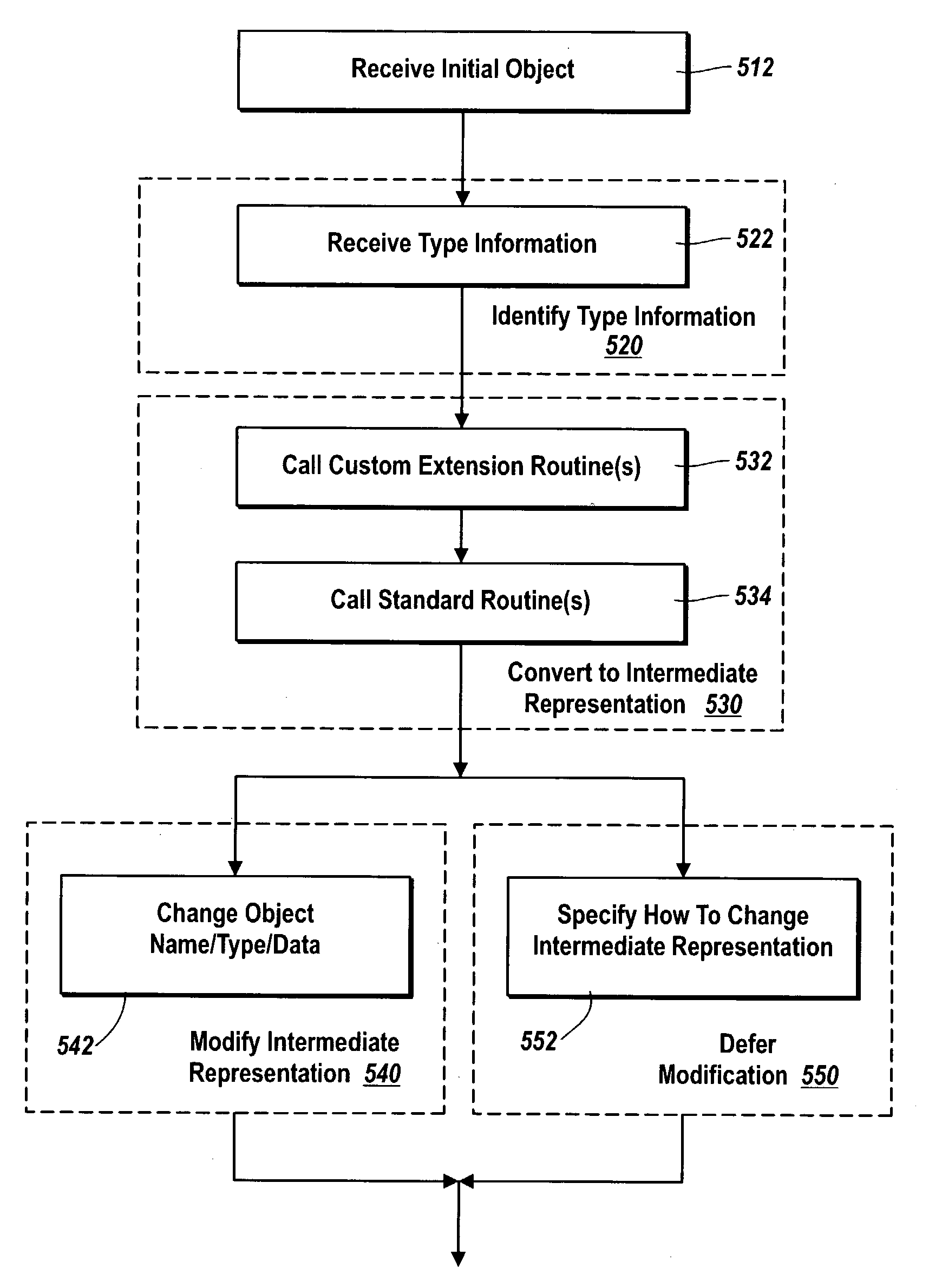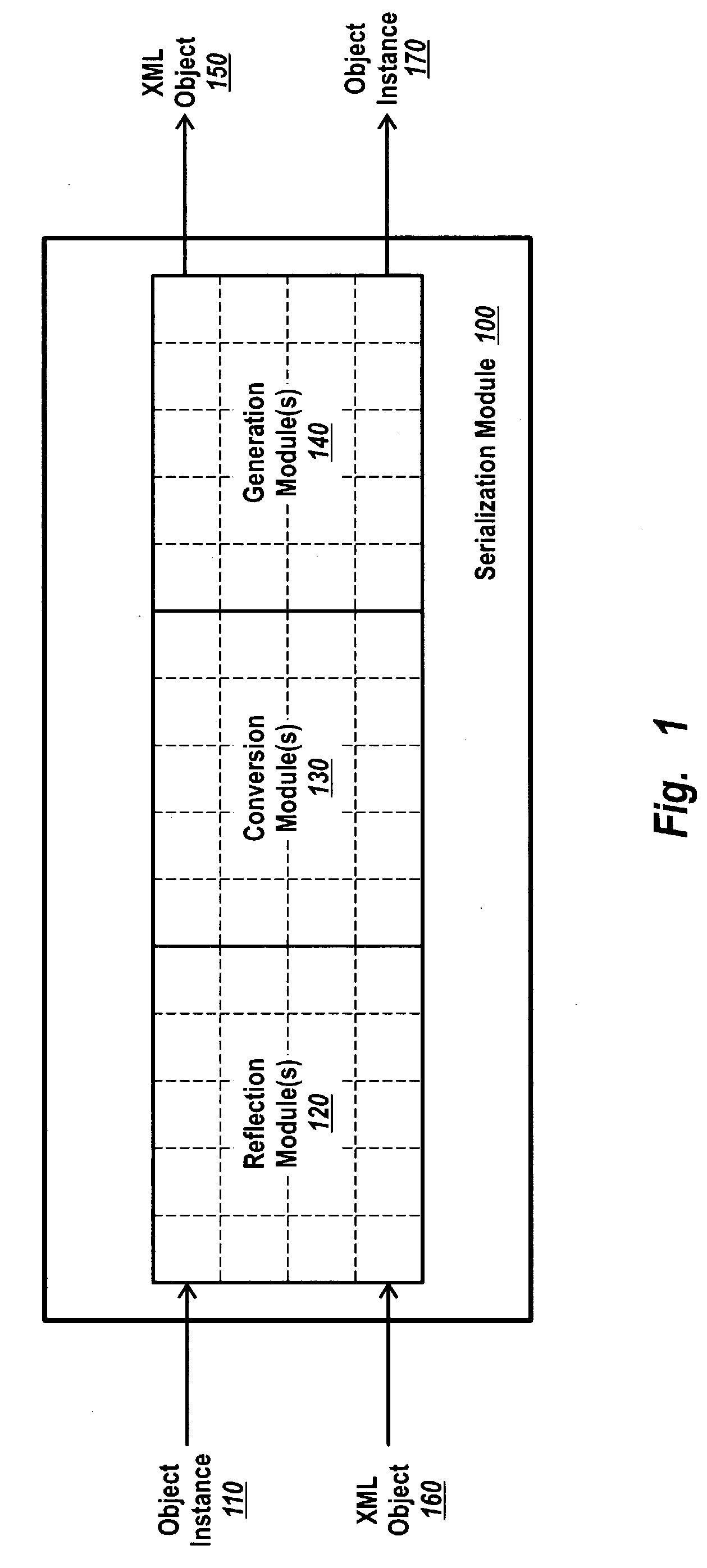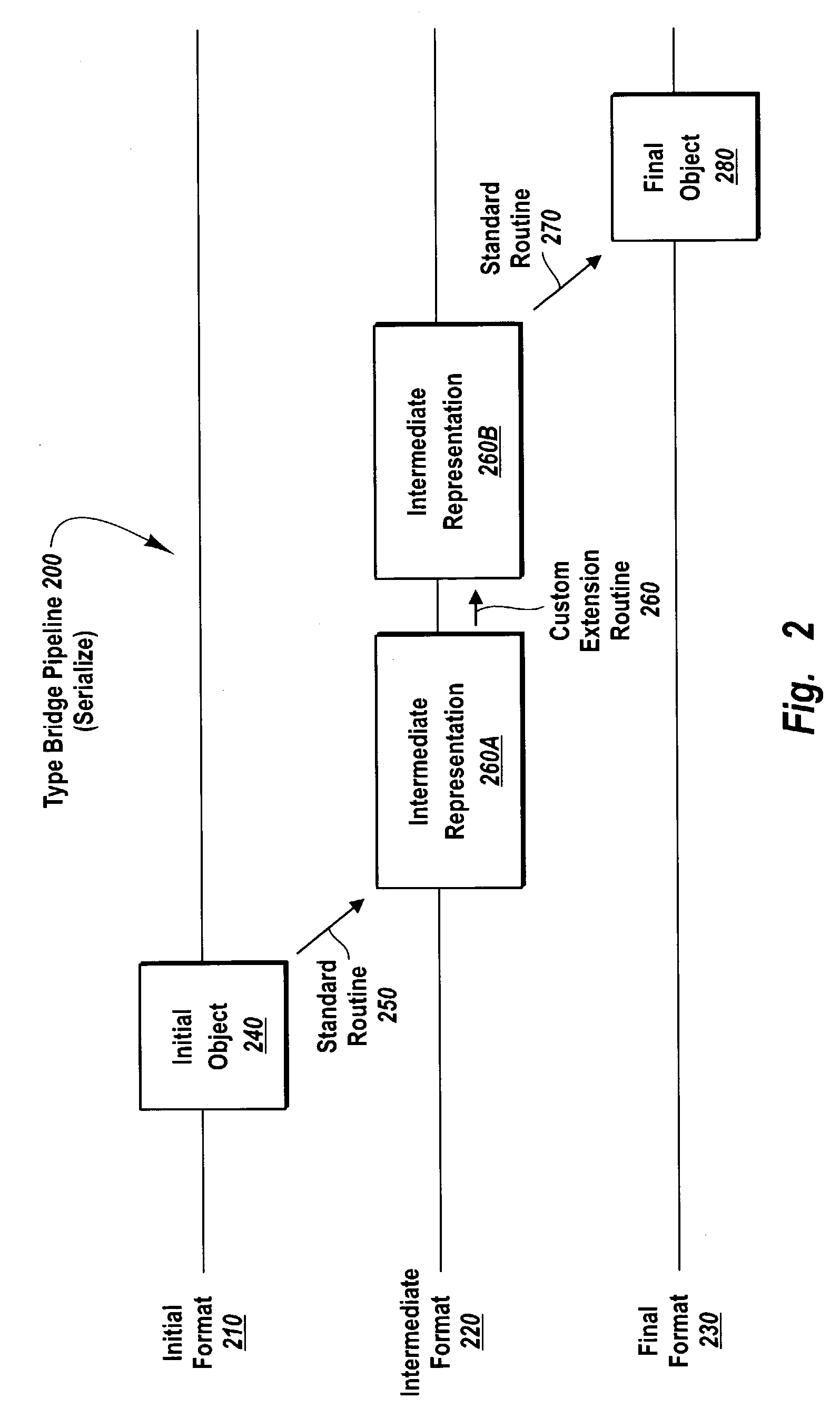Type bridges
a type bridge and bridge technology, applied in the field of object serialization, can solve the problems of inability to incrementally improve or customize to address a particular problem directly, inflexible serialization mechanism, and inability to meet the needs of specific problems, etc., and achieve the effect of reducing buffer requirements
- Summary
- Abstract
- Description
- Claims
- Application Information
AI Technical Summary
Benefits of technology
Problems solved by technology
Method used
Image
Examples
Embodiment Construction
[0019]The present invention extends to methods, systems, and computer program products for converting objects of an initial type to objects of a final type that, and allows for the runtime operation of the conversion process to be altered or customized. The embodiments of the present invention may comprise one or more special purpose and / or one or more general purpose computers including various computer hardware, as discussed in greater detail below with respect to FIG. 6.
[0020]FIG. 1 illustrates an example serialization module and serialization infrastructure 100 (also known as a serialization engine) in accordance the present invention. For an object instance 110, serialization module 100 produces a corresponding serialized extensible Markup Language (XML) object 150. Similarly, for an XML object 160, serialization module 100 produces a corresponding deserialized object instance 170. It should be noted that throughout this application, serialization often is used as a generic ter...
PUM
 Login to View More
Login to View More Abstract
Description
Claims
Application Information
 Login to View More
Login to View More - R&D
- Intellectual Property
- Life Sciences
- Materials
- Tech Scout
- Unparalleled Data Quality
- Higher Quality Content
- 60% Fewer Hallucinations
Browse by: Latest US Patents, China's latest patents, Technical Efficacy Thesaurus, Application Domain, Technology Topic, Popular Technical Reports.
© 2025 PatSnap. All rights reserved.Legal|Privacy policy|Modern Slavery Act Transparency Statement|Sitemap|About US| Contact US: help@patsnap.com



